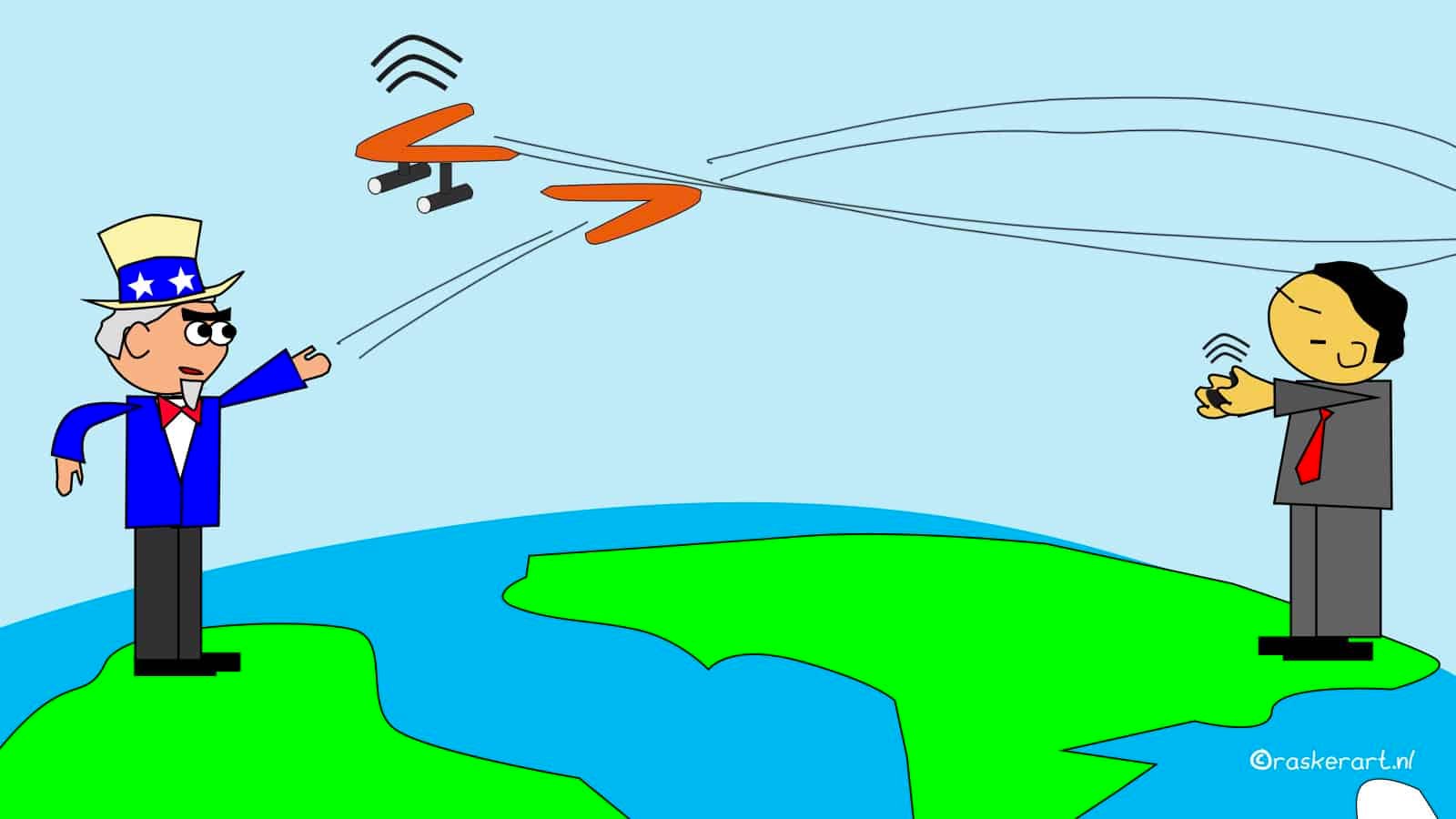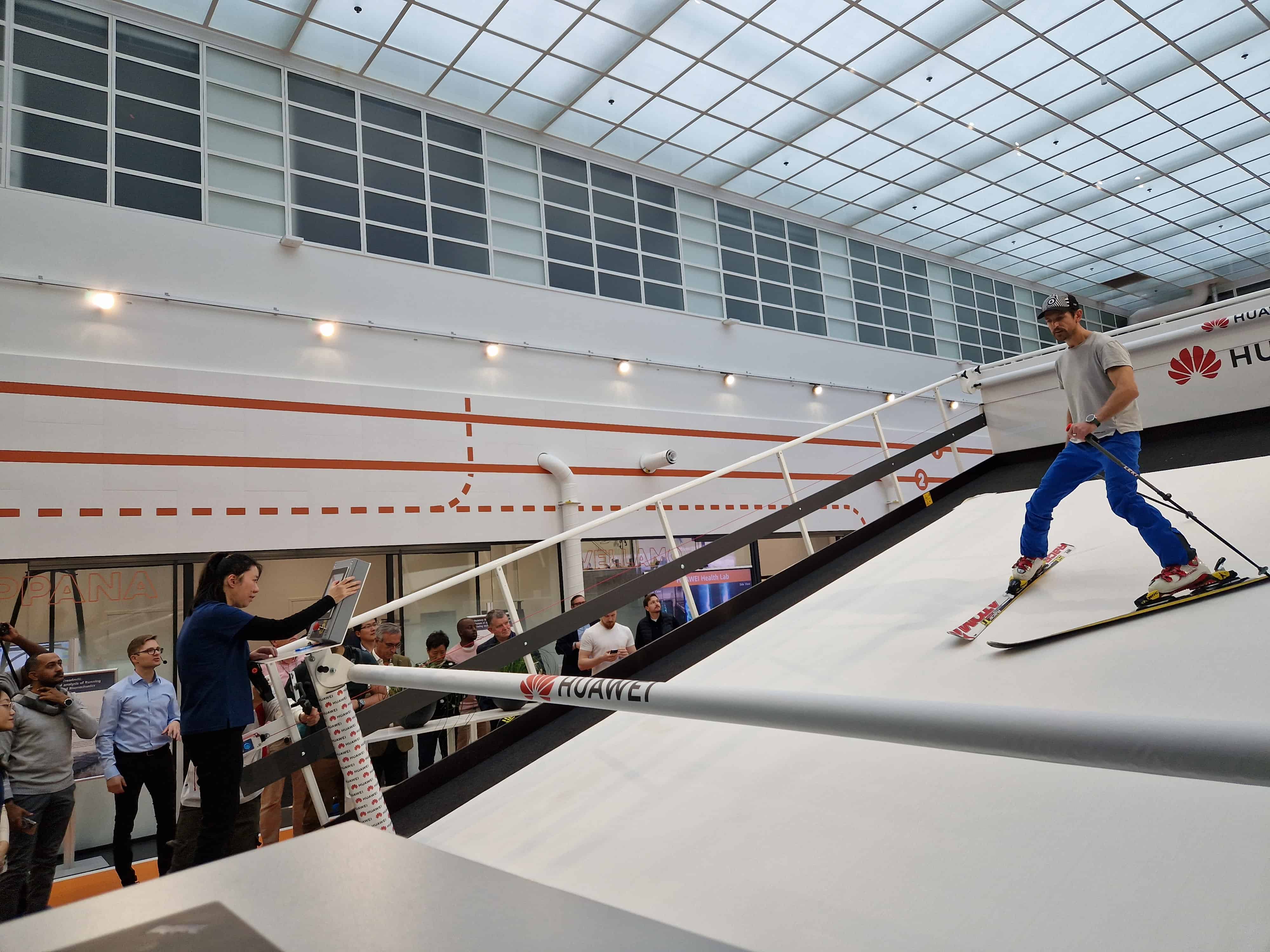
In 2022, some 492 million wearable units – including smartwatches, fitness monitors, and head-mounted displays – were sold worldwide. The global market is expected to expand consistently, reaching by 2030 a $142.4 billion value from a $55 billion market size last year. Huawei is one of the companies betting the most on this market, as it launched its first health research lab outside of China in Helsinki, Finland.
- Huawei opened a new health research lab in Helsinki to develop its wearables, adding to two existing centers in China.
- The lab has testing facilities for skiing, swimming, and running to refine devices for athletes and consumers.
- Despite tensions, Huawei is deepening ties in Europe.
The tech giant unveiled the lab on October 26. The facility adds to the two Chinese health research centers in Xi’an and Songshan Lakes. The newly-setup lab comprises a multidisciplinary team that will investigate sports and health in developing the new generation of the company’s wearable devices. Located in an industrial area of the Finnish capital, the health lab features several testing areas where to test with a wide array of sports, spanning from running to alpine skiing.
Therefore, Huawei is willing to stay competitive. Smartwatch selling data from the third quarter of 2023 shows the Chinese claiming ten percent of smartwatch unit shipment share, following market leader Apple, retaining 22 percent of the shipments.
“This lab shows Huawei’s commitment to health and sports science research,” said Rico Zhang, President of the Smart wearable and health product line, on stage. Zhang touched upon the mission of the lab, which comes primarily as a research and development center but also as an “industry incubator.”

Sporting
Next to the presentation stage is a ski simulator. There, a former Finnish skier goes down the artificial slope, replicating an Alpine scenario – despite the temperature, as he skies wearing a t-shirt. The white carpet closely resembles snow, according to the sportsman, not only for its color. It can be even wetted to simulate different snow conditions. The skier says it’s a good way to learn how to ski, although doing so on the carpet involves slightly higher gliding. Sensors on his body and cameras around the slope keep track of each movement he makes, with real-time data being shown on a nearby screen.
From the open space, a slight smell of chlorine enters the corridor. It comes from the pool located in the adjacent room. Moving closer to the water, the temperature rises. It’s set at 28 degrees Celsius, and inside the pool, a professional swimmer is making his way against the current, as a fan-like engine keeps the flow constant. On his mouth is a measuring mask connected to sensors measuring oxygen flow. Cameras on top and the side measure parameters like hip and head angle.
Inside the lab, researchers will conduct their experiments using Huawei’s latest smartwatch, the GT-4. It can assess users’ running ability, as well as evaluate human cardiopulmonary capacity so as to evaluate performance more efficiently.
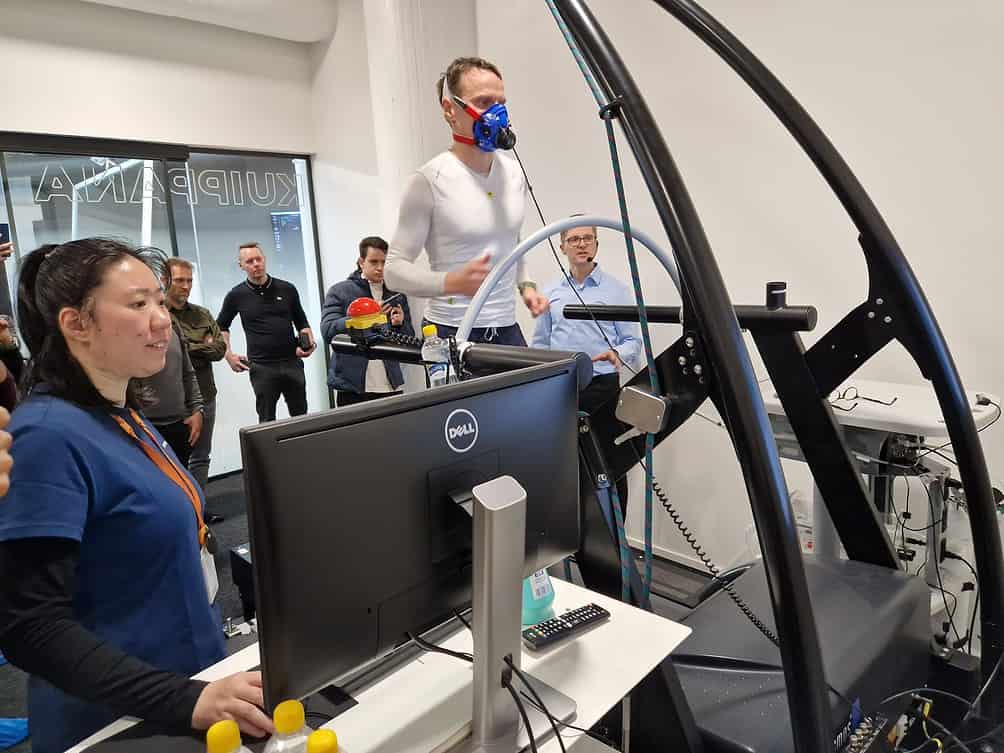
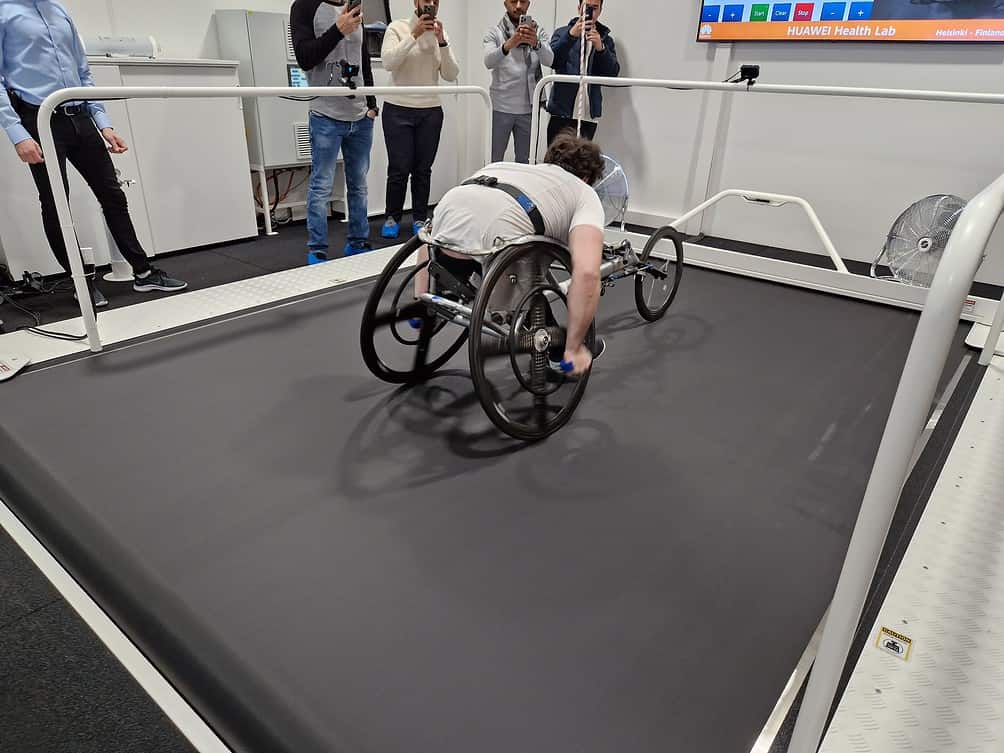
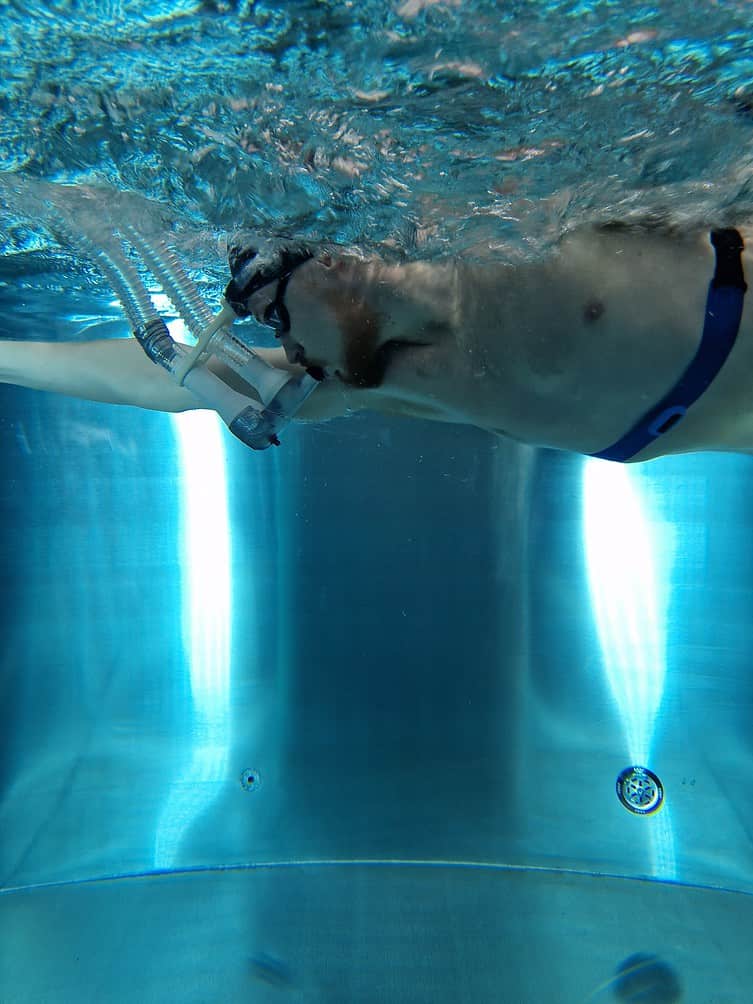
From athletes to consumers
A large treadmill takes up most of the space of a nearby room. There, a cross-country skier, a cyclist, and a paralympic cyclist take turns to use the platform. Before doing so, they all wear a harness. “Safety first,” says the Huawei employee monitoring the activity from the computer. The athletes wear more than the safety rope. On the back of the skier is a heart rate monitor; on the mouth of the cyclist sits a mask to measure oxygen flow.
Conducting tests with paralympic athletes is seen by the tech giant as preparatory to refining and creating devices that can also cater to physically incapacitated people. Zhang also stressed this point. Overall, testing with top-performing athletes, who, by nature, push to exceed their limits, results in solid technology for the average consumer and vice versa. The whole range of wearables aims to serve beginners but also to get endorsements from the top athletes, too.
More than sports watches
Jogging is one of the easiest and most popular sports to practice, and where smartwatches are mostly being used. What the guide describes as an instrumented treadmill is where a triathlete is doing a little run. On the screens in front of him, real-time data on his heart and breath appear, as well as measurements of how his legs release energy to the moving floor. One leg can be more dominant than the other, and this can be noticed by the amount of strength it releases on the surface and by the way it breaks.
Smart watches can be more than gear for sports enthusiasts. They can monitor vital signs, for instance. One of the latest Huawei models can measure blood pressure. Its sensors under the case sense through the skin, and the cuff inflates, replacing the pump and the stethoscopes of old-fashioned measuring pumps. Despite not being medical devices, Huawei smartwatches monitor vital signs, alerting users to go and see their doctor if needed.
The Chinese company is also designing its watches as fashion objects, as something to wear at every moment of the day, not only when doing sports. Its GT line has switched towards a sleek design over the years, boasting round quadrants and colorful iron bracelets, as shown by a banner hanging next to one of the test areas. The GT-4 comes at a lower price than its main competitor but also suffers from the limitations affecting Huawei itself, which doesn’t feature a full version of Android any more and doesn’t have access to Google apps.
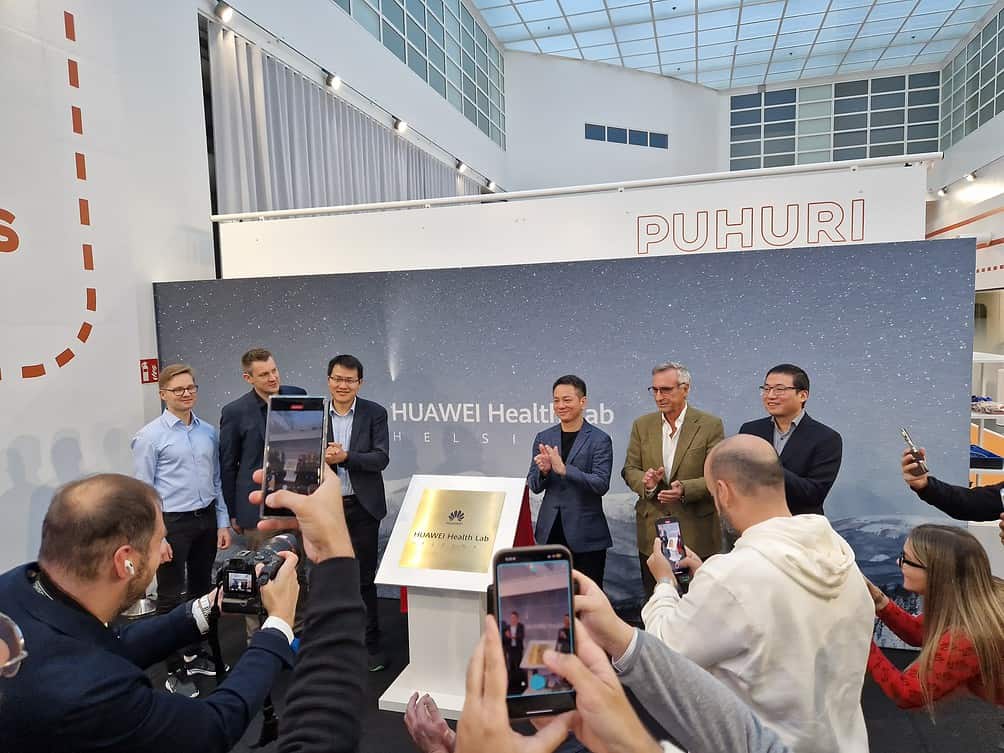
Partnering with European universities
With this move, Europe is becoming increasingly central in the company’s plans. Huawei has 18 research centers across the Old Continent with over 10,000 employees. One of them is in Helsinki, a few blocks away from the new facility, and the health lab builds upon research conducted there. The Chinese company was also the co-founder of Interlive, a consortium set up with six European universities to develop standards for wearable devices.
On behalf of the universities, Professor Luis Bettencourt Sardinha from the University of Lisbon thanked Huawei for the collaboration. In his view, the lab is an important resource to “develop knowledge.” Looking back at the Interlive project, the academic believes it was a chance to produce “good science,” understanding user needs that translate into valuable products. The consortium published several protocols on wearables features, such as heart rate and step count.

Tough times
Europe’s stance on Huawei is not as positive. In 2020, the EU released a toolbox to limit the dependence on the company’s equipment while building its 5G infrastructure. Earlier this year, the Commission issued a new report on the toolbox’s implementation, flagging Huawei and ZTE as high-risk suppliers, justifying their exclusion from tenders by some member states. The Chinese company kicked back by filing a complaint. In fomenting the tension, the news of a former employee of ASML – the world leader in chip-making machines – who stole confidential information and then joined the Shenzen-headquartered company came last week.
In June, a report by the Financial Times unveiled that Huawei received money from eleven Horizon Europe programs – the EU’s lead research initiative – getting up to fourteen percent of funding per scheme. The news was welcomed with fierce criticism, as in the project, sensible research in AI, quantum sensing, and cloud computing was conducted, with the Chinese company considered a threat to European security.
Overall, from electronic equipment to lithium supplies, Europe has been striving to decouple itself from China, with the US also stepping into critical areas, such as semiconductor technology. Home to ASML, the Netherlands has been deeply entangled in the controversy, with multiple bans affecting the export of top-notch equipment to China.
Ongoing story
Tensions aside, Huawei’s stride shows interest in deepening its relations and penetration within Europe amid criticism and suspicion. The new Finnish facility comes as an important chapter in the story. Many more will come, for sure.






